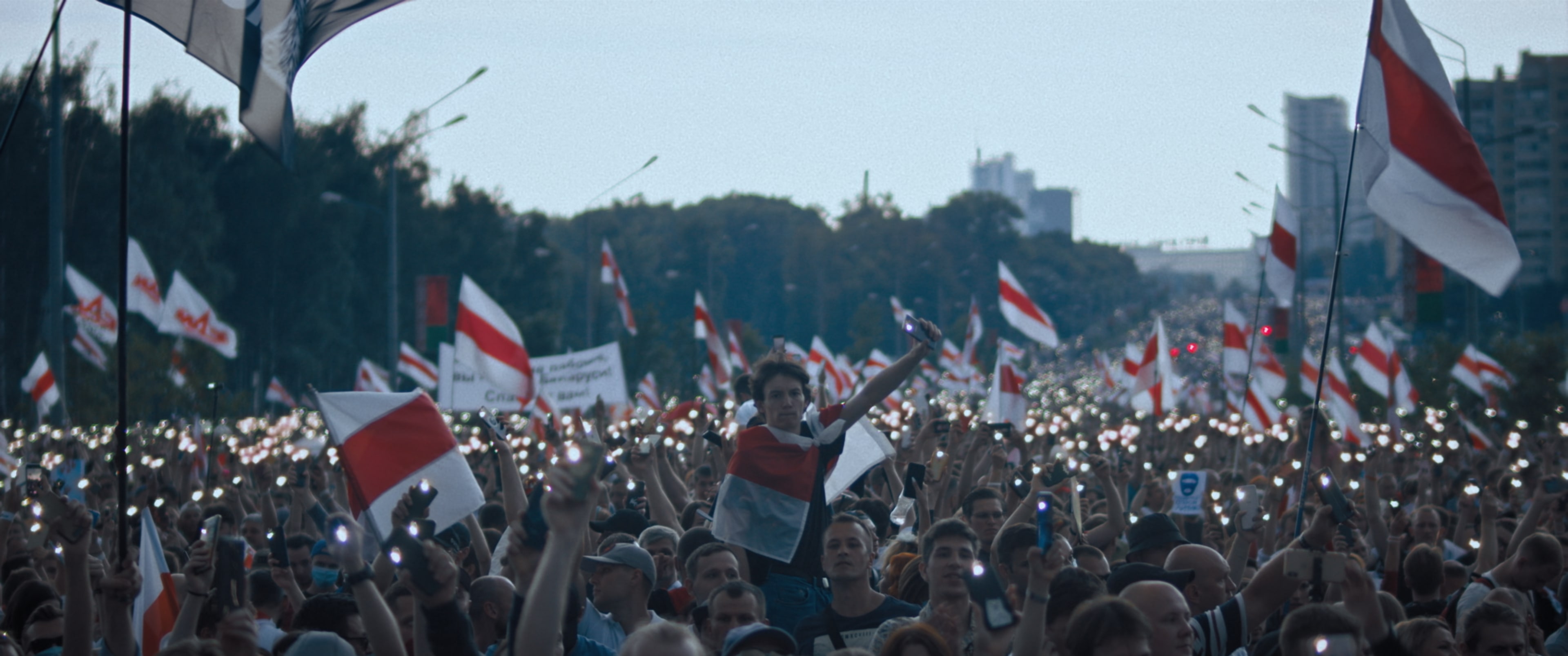To Act and To Understand. Courage // Verzió X ELTE

As Sonia Tascón points out in her text on Watching Others’ Troubles: Revisiting “The Film Act” and Spectatorship in Activist Film Festivals, spectators usually watch these kinds of events from a distanced “western” position. She uses the term “humanitarian gaze” to describe the power-relations between spectator and film-subject in this context. According to her, a certain “authority emanates from the very nature [...] of being able to watch others [...] and given entry to their moments of vulnerability”. In the following I want to examine how Courage tries to break with the described kind of distance and allows its spectators to affectively perceive the depicted events along with the film-subjects, creating a closer spectator-relationship.
The documentation is distinguished by an observational mode: the subjects act like they are unaware of being filmed and there is no direct talk into the camera (no interviews). The spectator observes (seemingly) spontaneous scenes of daily live, uninfluenced by the presence of the camera and unaccompanied by an omniscient voiceover offering background information. This position forces her “to take a more active role in determining the significance of what is said and done” (Bill Nichols, 2001). In order to create a narrative, the spectators have to interpret and link the perceived scenes from their subjective view, but also in interaction with other viewers. This active involvement of the spectator creating dialogue beyond the actual content of the film is termed as “film act” by Tascón.

Courage
Depicting the events of the protests, the camera is constantly placed inside the masses. Thus, the observers perceive the events from a protester’s perspective, having a restricted overview of what is happening. In addition to that, the fast and shaky camera-movement, the fast cuts and the soundscape consisting of screaming people, explosions and honking cars, enables the observers to affectively perceive the protesters feeling of chaos, fear, and panic as well as the unity and solidarity among them. While overlooking the crowd from above would create a distanced position for the viewer, this placement among the people creates a feeling of closeness to the subjects and events.
The film rarely shows direct violence the protesters experience during the riots. Instead, the danger posed by police and military is made perceivable through the already described cinematic means and through the way these governmental forces are depicted. Therefore, the spectator doesn’t become the voyeur of the tragic, brutal events, but becomes aware of how the affected people might feel.
In contrast to these experiences as being “part of the crowd”, the film frequently focuses on people’s faces to depict their emotions. By doing so, the documentary makes the viewers aware that the crowd is not a faceless mass, but consists of individuals. The scenes portraying closer insights into the daily lives of the different actors, simultaneously to the unfolding political events, serve the same purpose: the spectator watches them dealing with their individual struggles produced by the oppressive government, talking about their fears and past experiences, but also just practicing everyday activities. Contrasting the escalating events on the streets, these scenes illustrate that, even during humanitarian crises, everyday life, as we all know it is still happening. Going through ups and downs, the subjects are never portrayed as weak or helpless, asking for the spectators’ compassion. Instead, all three of them act somehow determined and hopeful.
To conclude, I believe that the way the documentary is staged actively involves the observer, creating certain closeness to the subjects and the depicted events. The documentaries’ purpose is not to objectively inform about the situation in Belarus, but rather to make the spectators understand the people’s struggles, fears and their anger. It strives to provoke discussions leaving the small frame of events included in the film and finally concerning the Belarusian situation itself.
References
Nichols, Bill: What Types of Documentaries Are There? In: Introduction to Documentary. Indiana University Press, 2001. pp. 99-138.
Tascon, Sonia M.: Watching Others' Troubles: Revisiting 'The Film Act' and Spectatorship in Activist Film Festivals. In: Tascon, Sonia – Wils, Tyson (eds.): Activist Film Festivals: Towards a Political Subject. Intellect Books, 2016. pp. 21–37.
Skadi Pest
ELTE Film Studies student